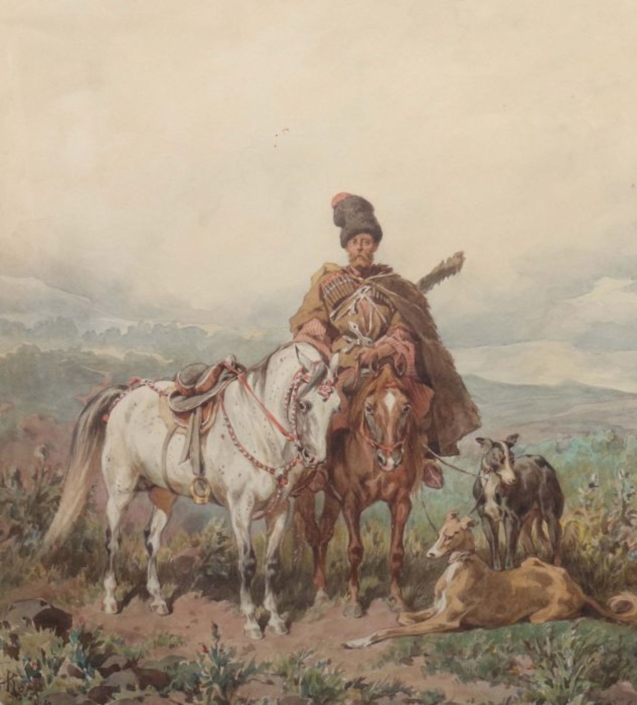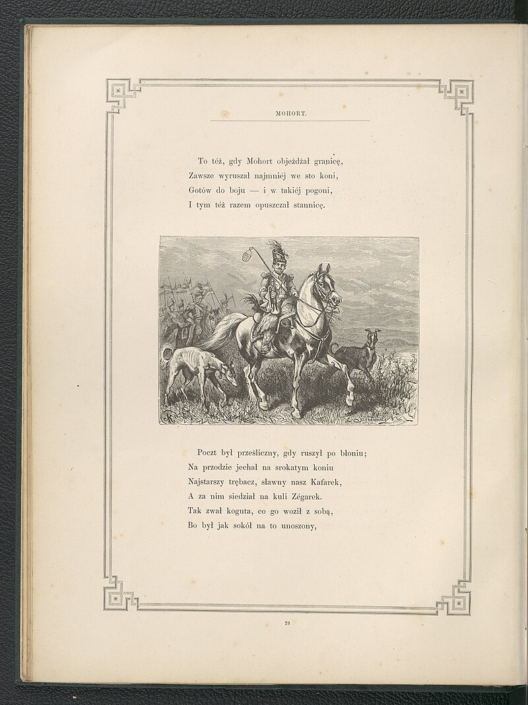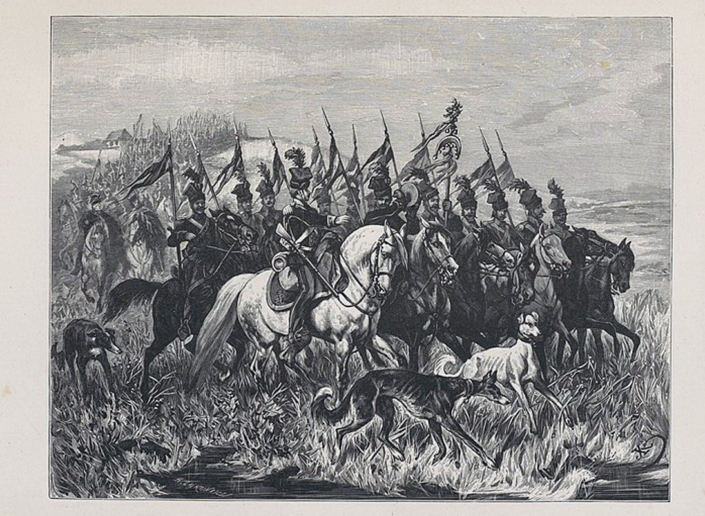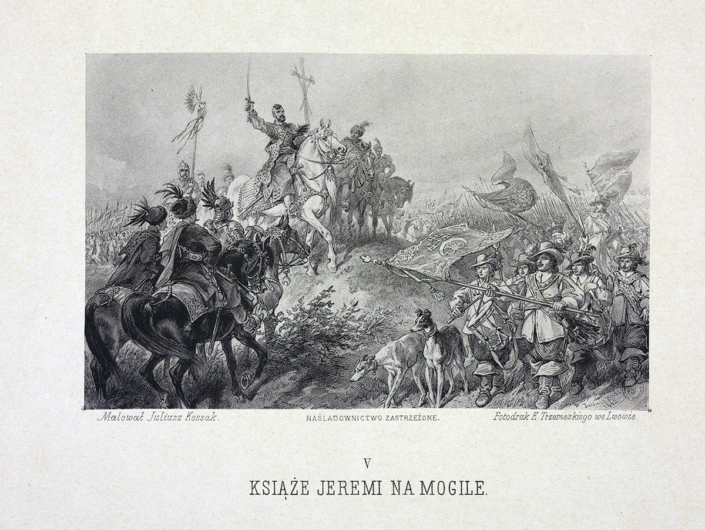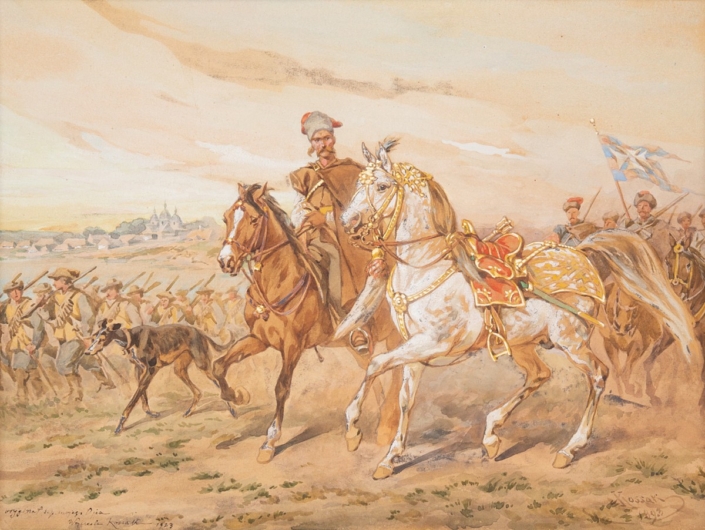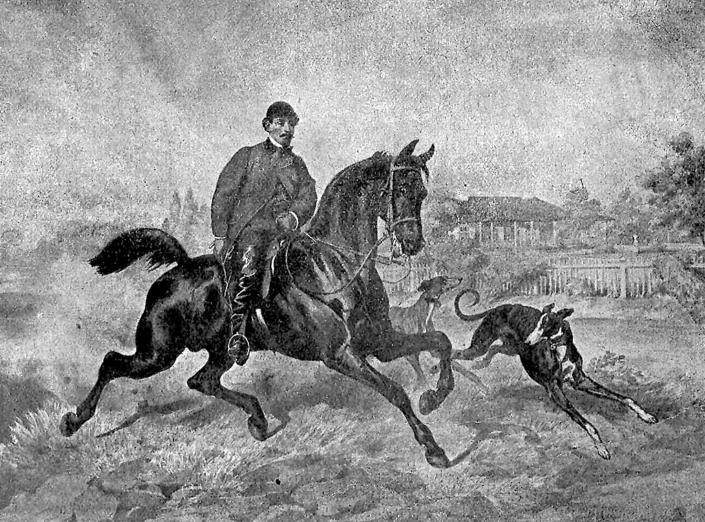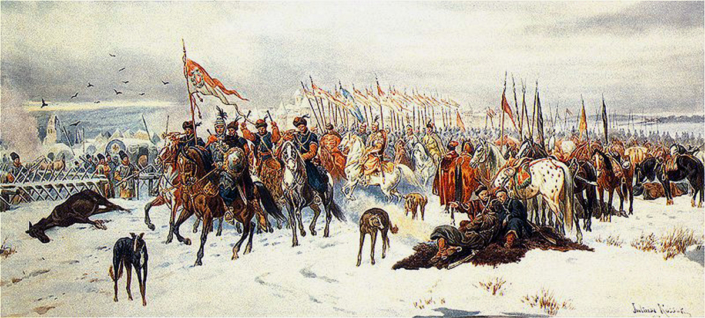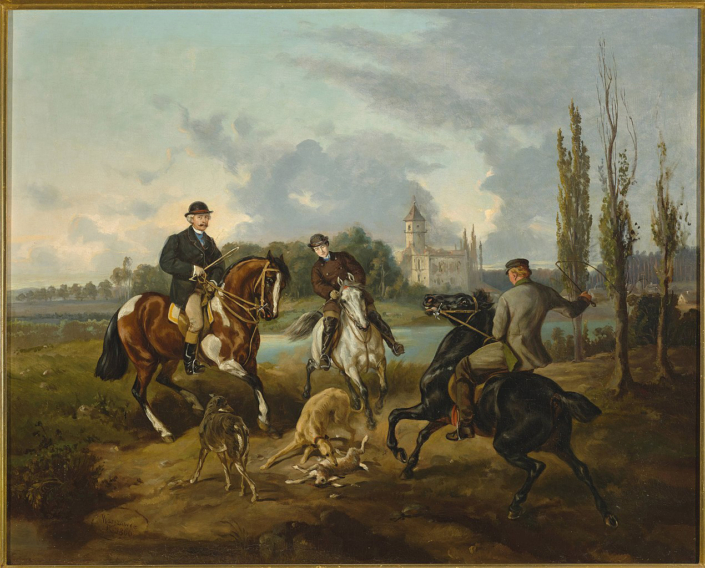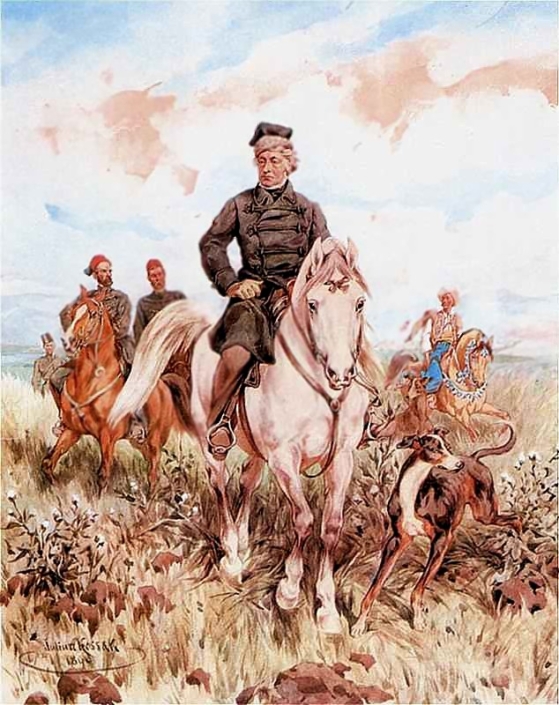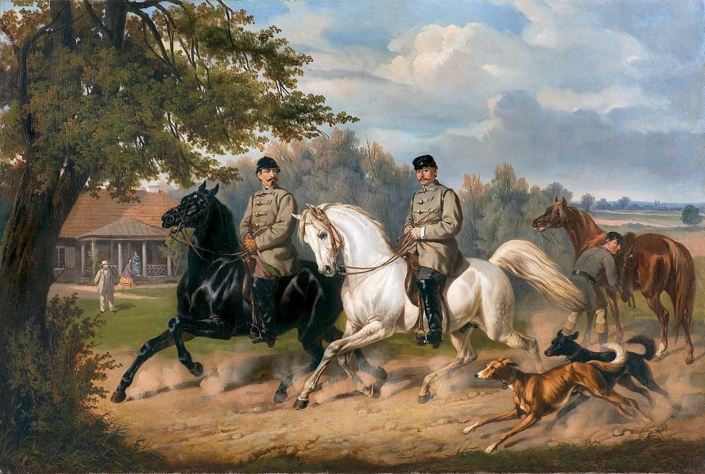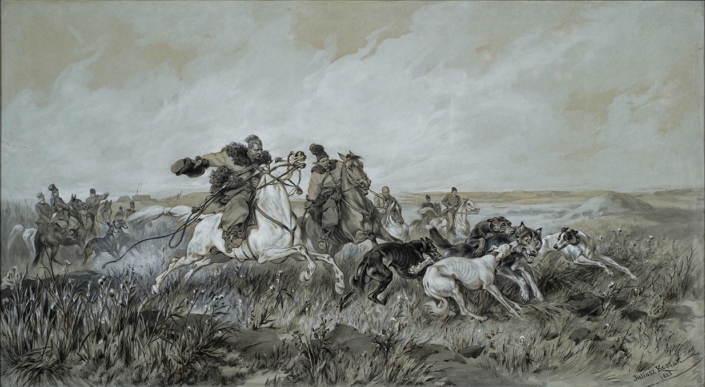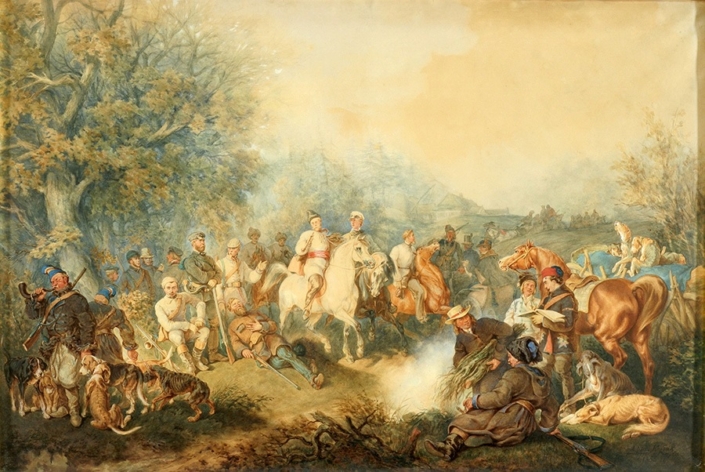1824 – 1899
Juliusz Kossak: the Polish master of battle scenes and equestrian art
Juliusz Kossak, born on 29 October 1824 in Nowy Wiśnicz and passed away on 3 February 1899 in Kraków, left an indelible mark on the art world as one of the most famous Polish painters of the 19th century. His legacy revolves primarily around his exceptional talent for portraying historical events, particularly battle scenes, military figures and the constant presence of horses and greyhounds. Notably, Kossak’s influence extended beyond his lifetime, as he laid the artistic foundation for future generations, including his son, Wojciech Kossak, and his grandson, Jerzy Kossak.
Life and education:
Born into a world ripe with artistic inspiration, Kossak’s journey into the realm of art began under the tutelage of his first mentor, Piotr Michałowski, a distinguished painter celebrated for his depictions of horses and mastery of watercolors. Although he initially studied law at Lviv University, Kossak’s passion for art flourished, leading him to fully immerse himself in the world of painting.
Career and influences:
Kossak’s artistic odyssey took him to Paris, where he honed his skills by studying treasures held in museum collections for five years. It was during this period that Kossak’s artistic ability blossomed, as evidenced by his diverse works, which range from intricate hunting scenes to portraits that capture the essence of aristocratic life. The birth of his three sons—Wojciech, Tadeusz, and Stefan—during this period marked a new chapter in Kossak’s personal and professional life, solidifying his ties to the artistic community.
Returning to Poland in 1860, Kossak settled in Warsaw, where he took on the role of artistic director at the weekly publication Tygodnik Ilustrowany. His time in Warsaw was marked by creative innovation and collaboration, as Kossak continued to push the boundaries of artistic expression.
In 1869, Kossak and his family moved to Kraków, where they purchased a residence nicknamed “Kossokówka”.
Legacy and lasting impact:
Juliusz Kossak’s enduring legacy transcends the boundaries of time, leaving an indelible imprint on the annals of Polish art history. His masterful depictions of historical events and the noble spirit of horses continue to fascinate audiences around the world, testifying to his unrivaled skill and artistic vision.
Until his passing in 1899, Kossak remained a constant presence in Kraków’s artistic community, his creative spirit undiminished by the passage of time. Today, his final resting place in Krakow’s Rakowice cemetery stands as a reminder of his lasting contribution to the world of art.


